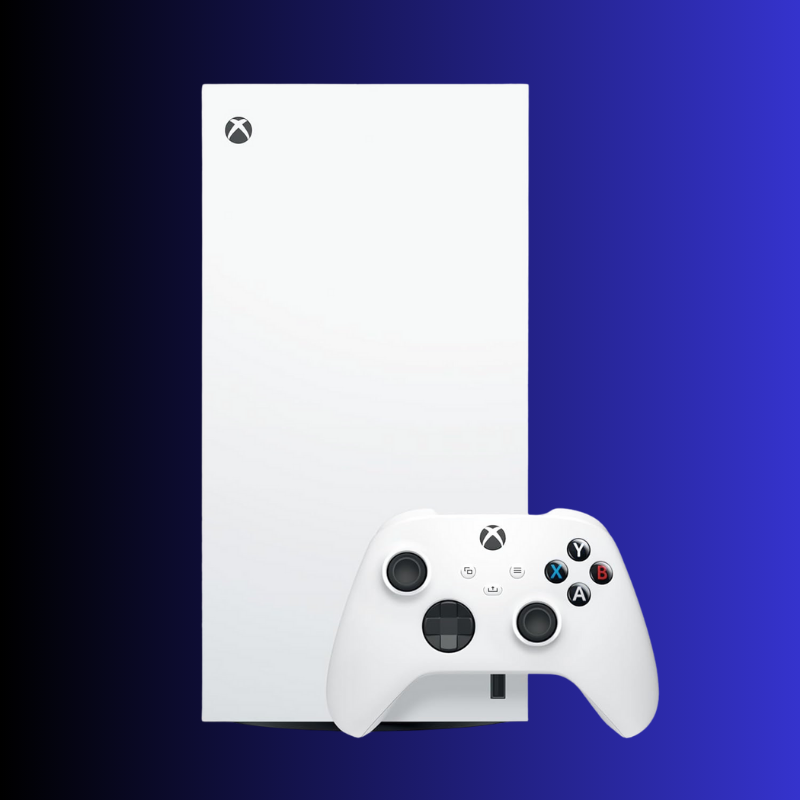When Microsoft launched the Xbox Series X and Series S in November 2020, it introduced two next-gen consoles tailored to different needs and budgets. The Series X offers top-of-the-line specs for immersive 4K gaming, while the Series S provides a cost-effective entry into the Xbox ecosystem. Both have their strengths—choosing between them depends on what kind of gaming experience you’re looking for.

1. Performance and Power
The Xbox Series X features an 8-core AMD Zen 2 CPU at 3.8 GHz and a GPU offering 12 teraflops of graphical power. This enables true 4K gaming and higher frame rates. The Series S also uses an 8-core AMD Zen 2 CPU (at 3.6 GHz) but has only 4 teraflops of GPU power, limiting it to 1440p resolution. While both benefit from SSD load speeds and the same CPU architecture, the Series X clearly delivers more performance for demanding games.
Source: “Xbox Series X and Series S specs: what we know about the next-gen consoles” – Eurogamer
2. Design and Size
The Xbox Series X resembles a sleek black PC tower, measuring 30.1 cm tall and weighing 4.45 kg. It’s designed for vertical or horizontal placement. The Series S, meanwhile, is a smaller white unit at just 27.5 cm long and 1.93 kg—ideal for tighter spaces or minimal setups. Despite its compact size, it retains the same design philosophy with proper cooling and efficient airflow.
Source: “Microsoft reveals just how small the Xbox Series S really is” – The Verge
3. Storage and Expandability
The Series X comes with a 1TB custom NVMe SSD, while the Series S offers a 512GB SSD. Game install sizes are identical across both consoles, so the smaller drive on the Series S can fill up quickly. Microsoft offers a proprietary 1TB Seagate expansion card (priced around ₹20,000 in India) for both consoles. External HDDs can store older-gen titles, but Series X|S native games must run from internal or expansion SSDs.
4. Optical Drive and Digital-Only Format
The Xbox Series X includes a 4K UHD Blu-ray disc drive, giving players the option to play physical discs and movies. In contrast, the Series S is entirely digital, which means no physical media—everything must be downloaded. For those who already have a digital library or use Xbox Game Pass, the Series S is a convenient and streamlined option.
Source: “Xbox Series S Is Digital Only — What That Means for You” – GameSpot
5. Backward Compatibility
Both consoles support backward compatibility with thousands of Xbox One, Xbox 360, and original Xbox titles. The Series X enhances older titles with faster load times and higher resolutions. Additionally, it can run physical copies of supported games. The Series S also supports the same games but only in digital format and typically without the 4K upscaling.
6. Ray Tracing and Visual Enhancements
Both consoles support real-time ray tracing, a rendering technique that simulates realistic lighting, shadows, and reflections. However, the Series X can process these effects at higher resolutions, resulting in better image quality, especially on 4K displays. The Series S supports ray tracing too, but often at lower resolutions and fewer visual effects.
7. Game Library and Xbox Game Pass
Xbox Game Pass is a major selling point for both consoles, offering access to hundreds of games for a monthly fee. At ₹349/month in India (or ₹499/month for Ultimate), you can play first-party titles on day one, stream via Xbox Cloud Gaming, and get EA Play bundled in. Both Series X and S support this service equally, giving access to the same library and updates.
Source: “Xbox Game Pass | Xbox India” – Xbox.com

8. Price and Value
As of now, the Xbox Series X is priced at ₹49,990, while the Series S comes in at ₹34,990 in India. The Series X is undoubtedly more powerful and better suited for those with a 4K TV and a physical game collection. On the other hand, the Series S delivers excellent value, especially when paired with Xbox Game Pass, making it a smart choice for casual or digital-first gamers.
Source: “Xbox Consoles | Xbox India Official Site” – Xbox.com
9. Target Audience and Use Case
The Series X is ideal for hardcore gamers who prioritize graphics, performance, and physical game ownership. It’s best paired with a 4K TV and a fast internet connection. Meanwhile, the Series S caters to casual gamers, first-time console buyers, or those who game occasionally and prefer digital content. Its small size and affordability make it a practical choice without major sacrifices.
10. Final Verdict
Both consoles offer next-gen features like fast loading, ray tracing, and high frame rates. The Xbox Series X is the ultimate option for those wanting the best visuals and full disc compatibility, while the Series S is a lean, efficient choice for players who want to enjoy modern games without spending top dollar. No matter which one you pick, the broader Xbox ecosystem—backward compatibility, Game Pass, and cloud streaming—makes either console a solid investment for the future of gaming.



